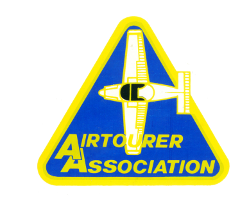A Test Pilot’s Observation 40 Years On
I purchased my Airtourer in 1985 years ago and less than a year after graduating from the Empire Test Pilot’s School. Naturally I conducted an evaluation of my new acquisition in the light of my recent training. One thing that struck me was the lack of aft stick travel, in particular at the point of stall where the backstop was encountered just after the point of stall. Additionally, I found the spin interesting if not a little disappointing. Rather that a stable conventional spin it appeared to be bordering on a spiral and appeared to recover when pro-spin controls were relaxed. At the time I was stationed at the Aircraft Research and Development Unit (ARDU) which had a range of aircraft including some CT-4As. The spinning characteristics of these CT4s were quite different from my Airtouter despite the similar shape.
Although I first soloed on the Winjeel the initial part of my Pilot’s Course proper was on the CT4 and at the time intentional spinning was banned. The RAAF had mixed experience with spinning the CT4 and in the late ‘70s tasked ARDU to complete a detailed evaluation. This was done well before my time so I reviewed the report and did some spin investigation myself. The CT4 spin had many similarities to the Airtourer as described in the article above. The main problem was the possibility, after four turns, of entering a high rate spin that could flatten out.. In this case a number of turns would be required to recover. Additionally, there were engine problems with loss of oil pressure causing the propeller to overspeed or the engine stopping altogether. Overall it was assessed that a student pilot may not have sufficient experience to successfully recover from this high rate, flat spin mode and hence intentional solo student spinning was prohibited. Subsequently there were reports of reluctance to recover during instructional sorties and eventually fully developed spins were banned. At one point some bush lawyer discovered that intentional inverted spinning was not specifically banned and since it was smooth and non-oscillatory the inverted mode was being used to demonstrate spinning. Eventually the system caught up and the words “Intentional inverted and erect stable spins are prohibited….” were inserted into the RAAF Flight Manual. However, the Kiwis assessed it differently and allowed intentional solo student spinning. I am not aware of any CT4 being lost due to a spin training accident. Current CT-4As subject to the Pacific Aerospace Corporation Flight Manual are approved for intentional spinning.
Armed with the foregoing knowledge I discussed Airtourer spinning with Henry over a bottle of red at Griffith in 1988. I felt adjusting the elevator stop to allow more up elevator would keep the wings in the stall and possibly allow a more stable spin to develop. He replied, “Ah yes, but you must remember to remove the rudder stop as well!” He went on to complain that, “They castrated my aeroplane.”
The Airtourer was certified to ANO 101.1 current in October 1960. I don’t have a copy of the relevant ANO however the spinning requirements would have included the ability to recover from a multi turn spin, possibly as many as eight, using the “standard method”, usually within 1 ½ turns. The second paragraph of the article above explains this was not possible and the elevator and rudder deflections were restricted to ensure the flat mode spin could not be induced.
 Airtourer Association Inc.
Airtourer Association Inc.